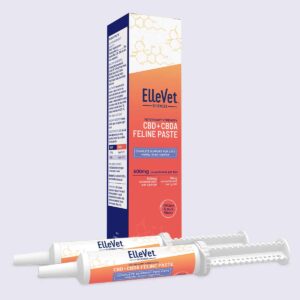Reviewed by: Dr. Robert Menardi, DVM
Every dog owner’s worst nightmare is seeing their beloved pet suffer from pain or discomfort, and unfortunately, arthritis is a common condition that can cause exactly that. Arthritis in dogs, like in humans, is a degenerative condition that affects the joints and can seriously hamper your furry friend’s quality of life.
But there’s good news; it’s possible to prevent or delay the onset and progression of canine arthritis. With early detection, a proper lifestyle, and the right care, your dog can enjoy their golden years with minimal discomfort.
This article will explore five ways to prevent arthritis in your dog and help them lead a happier, healthier life.
What Is Dog Arthritis?
To effectively prevent arthritis, it’s crucial to understand what it is and how it impacts your dog’s life. Arthritis, specifically osteoarthritis, is a degenerative joint disease that causes inflammation and pain in your dog’s joints. Over time, the wear and tear on the joints can lead to discomfort, pain, and reduced mobility.
Joint problems can manifest in different ways in dogs. Hip dysplasia and elbow dysplasia are common conditions where the joints don’t develop correctly, leading to a gradual breakdown and eventual arthritis. These conditions primarily affect larger breeds, but smaller dogs are not entirely immune.
When arthritis sets in, the affected joints can cause your dog significant discomfort. Common signs of arthritis include lameness, limping, and a noticeable decrease in the range of motion. Dogs with arthritis might struggle with activities they once enjoyed, such as climbing stairs or jumping to their favorite couch spot.
Understanding these signs is crucial as it allows for early detection and intervention. By noticing the signs of arthritis at an early stage, you can take steps to manage the disease and slow its progression, which can make a world of difference to your dog’s quality of life. Remember, your vet can perform tests like X-rays to confirm if your dog is beginning to develop arthritis.
How Can I Reduce the Risks of Arthritis?
One of the simplest and most effective ways to prevent canine arthritis is to keep your dog at a healthy body weight. Obesity in dogs significantly increases the risk of developing arthritis since excess weight strains your dog’s joints, accelerating the wear and tear process.
A balanced diet of high-quality dog food, portion control, and regular exercise are vital in ensuring your dog maintains a healthy weight. Regular activity helps control weight and keeps your dog’s joints flexible and healthy. Active dogs have stronger muscles, which provide better support for their joints, decreasing the likelihood of joint degeneration.
Regular exercise helps increase your dog’s range of motion and overall activity level, promoting better joint health. Incorporating activities such as regular walks, gentle play, and swimming can work wonders in keeping your dog agile and limber. However, be careful not to overdo it; high-impact activities can cause undue stress on your dog’s joints.
Just as keeping your dog active is essential, providing them with rest and recovery time is equally important. Adequate rest allows the body to repair and maintain the health of your dog’s joints.
Can a Good Diet Reduce the Risk of Arthritis?
Diet plays a critical role in preventing and managing arthritis in dogs. Certain nutrients have been found to promote joint health and can be incorporated into your dog’s diet, either through high-quality dog food or supplements.
There is evidence that Omega-3 fatty acids, particularly EPA and DHA, are highly beneficial for dogs with arthritis. These fatty acids are found in fish oil and are known for their potent anti-inflammatory properties.
By reducing inflammation, they can alleviate the pain and discomfort associated with arthritis. They can also contribute to the overall health of your dog’s joints, slowing the progression of arthritis.
Glucosamine and chondroitin are often thought to be beneficial for dogs at risk of arthritis, although there is limited scientific evidence to confirm this. These compounds are found naturally in healthy cartilage. When administered as supplements, they may aid in cushioning joints, supporting the body’s fight against wear and tear.
Joint supplements for dogs often come in the form of chews or tablets and are typically well-tolerated. However, it’s essential to consult with your veterinarian before starting your dog on any new supplements, as they can provide personalized advice based on your dog’s unique health needs and body condition.
Can My Vet Detect Arthritis?
Ensuring regular vet check-ups is a key step in preventing arthritis in dogs. These check-ups allow for early detection of potential problems, and your vet can offer advice on how to slow the progression of arthritis if your dog is at risk.
Regular exams become increasingly important as your dog ages and the risk of developing degenerative joint disease increases. The vet will generally perform a physical examination, checking for signs of arthritis such as lameness, discomfort when certain joints are manipulated, reduced range of motion, and swelling in the joints.
They also recommend X-rays to get a detailed view of your dog’s joints and to detect early-stage arthritis. Catching and treating arthritis at an early stage can drastically improve your dog’s quality of life.
Your veterinarian can also guide you on proper nutrition, suitable exercise routines, and necessary lifestyle changes to prevent arthritis or slow its progression. Additionally, the vet might recommend joint supplements to support joint health.
Incorporating diet changes, like adding joint-friendly supplements or switching to joint-supportive dog food, can help reduce the risk of arthritis as your dog ages. Any dietary change should be done gradually to avoid upsetting your dog’s digestive system.
What Are the Signs of Arthritis?
Knowledge is power when it comes to preventing arthritis in dogs. As a dog owner, it’s vital to understand the signs of arthritis in dogs and seek veterinary attention as soon as you suspect your dog might be affected.
Some common signs of arthritis in dogs include:
- Limping: If your dog is favoring one leg, it could indicate that the limb is painful, possibly due to arthritis.
- Difficulty moving: Dogs with arthritis often struggle with activities like jumping onto couches or climbing stairs.
- Changes in behavior: A dog with arthritis might become more irritable or show less interest in activities they previously enjoyed.
- Stiffness: Dogs with arthritis often show stiffness, particularly after waking up. If you notice your dog having difficulty getting up, arthritis could be the cause.
- Changes in appetite and weight: A dog in pain might eat less, resulting in weight loss. On the other hand, reduced activity due to arthritis could also result in weight gain.
It’s important to note that arthritis symptoms can be subtle and easy to miss in the early stages. Regular vet check-ups can help ensure early detection and treatment, enhancing your dog’s quality of life.
Does My Dog Need Surgery?
In severe cases of arthritis, where conservative management methods have not been successful, your vet may recommend surgical intervention. These procedures typically aim to alleviate pain, improve mobility, and enhance your dog’s overall quality of life.
Common surgeries for arthritis in dogs include joint replacements, arthroscopy (a minimally invasive procedure used to diagnose and treat joint issues), and procedures to correct specific conditions like hip or elbow dysplasia.
Recently, regenerative medicine has shown promise in managing and even preventing arthritis in dogs. Techniques such as stem cell therapy and platelet-rich plasma injections work by harnessing the body’s own healing capabilities to repair and regenerate damaged tissues, potentially slowing or even halting the degenerative process in the joints.
While these techniques are still relatively new, early results are encouraging, and research is ongoing. Having a detailed conversation with your vet about the potential benefits and risks of these cutting-edge treatments is important.
Keep Your Pup Moving
Preventing arthritis in dogs involves a multi-pronged approach, including maintaining a healthy weight, regular exercise, using clinically proven supplements, regular vet check-ups, and feeding high-quality dog food. Early recognition and treatment of the disease can drastically slow the progression of arthritis and improve your dog’s quality of life.
While arthritis is common, especially in older dogs, it’s not a foregone conclusion. By ensuring your dog’s joint health from their puppy days onwards, you’re setting the stage for a long, active, and pain-free life for your canine companion.
Remember, your vet is your best resource for information about your dog’s health. If you’re concerned about arthritis or just want more information, don’t hesitate to contact your veterinary healthcare team.
They can provide guidance tailored to your dog’s unique needs and circumstances. Here’s to many happy, healthy years with your four-legged friend!
Sources:
Role of Exercise in Arthritis Management









